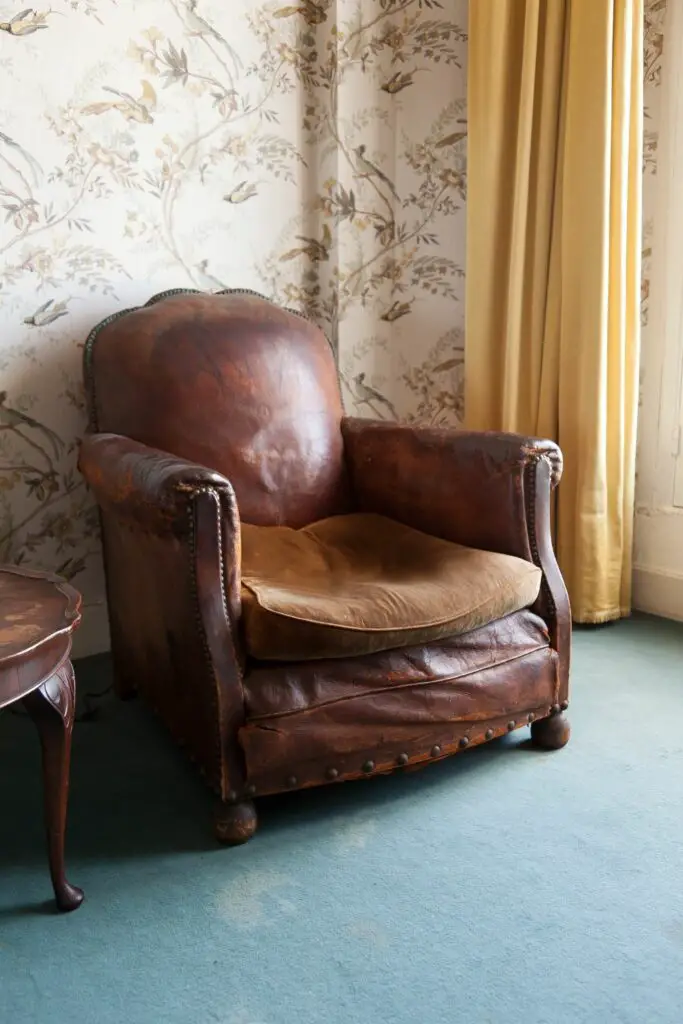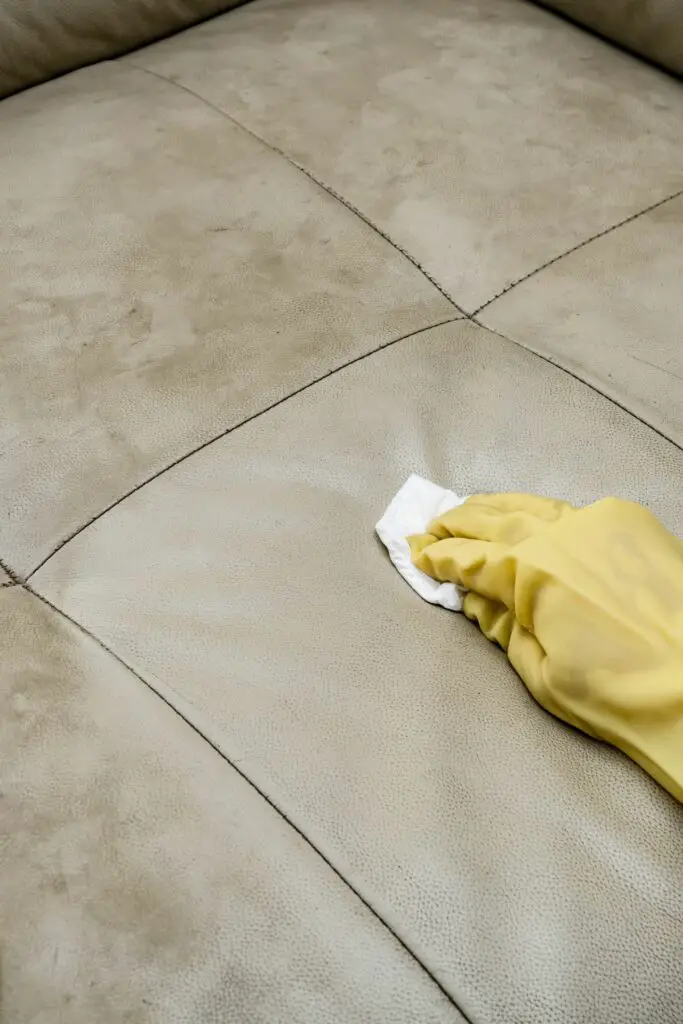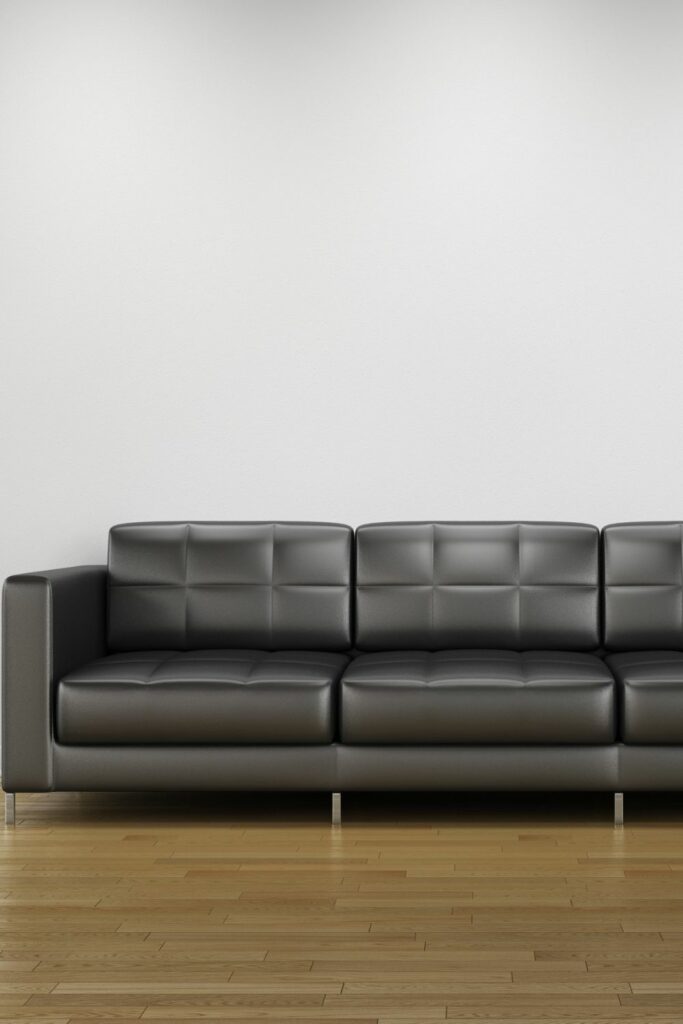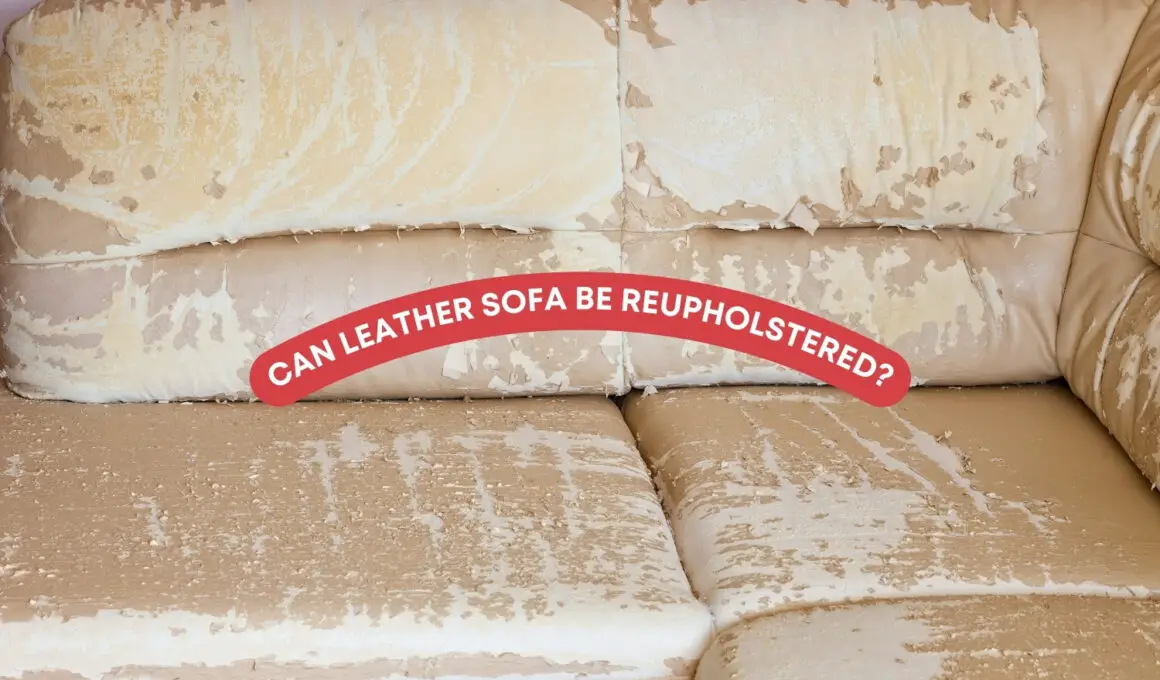Table of Contents Show
Welcome to the world where your cherished leather sofa doesn’t have to be part of a landfill statistic the moment it shows signs of aging. As a seasoned homeowner and contractor, I’ve seen firsthand the incredible transformations that can happen with a bit of craftsmanship and care.
The question we’re tackling today isn’t just a matter of possibility; it’s about breathing new life into your living space. Can a leather sofa be reupholstered? Absolutely, and the journey to revitalize your beloved piece of furniture can be as rewarding as it is eco-friendly.
Reupholstering a leather sofa isn’t only about repairing worn-out surfaces; it’s a statement of style and a commitment to sustainability. It’s about preserving memories while embracing the new, without compromising on quality or aesthetics. So, let’s walk through the essentials of giving your leather sofa a second chance at making a first impression.
Whether you’re looking to update your home décor or to extend the life of your trusty couch, this guide is your ally. Join me in exploring how your leather sofa can not only survive the years but also thrive as a centerpiece of your home’s comfort and character.
Quick Answer
Yes, a leather sofa can be reupholstered. This process involves replacing the existing leather with new material, which can revitalize an aging piece of furniture and extend its life. Key considerations for successful reupholstery include the quality of the new leather, the sofa’s frame condition, and the attention to detail during the reupholstery process. It’s important to weigh the costs and benefits, as reupholstering can be a cost-effective alternative to purchasing a new sofa, particularly for high-quality or sentimental pieces.
Assessing Your Leather Sofa for Reupholstery
Signs That Your Leather Sofa Can Be Reupholstered

When assessing whether your leather sofa is a good candidate for reupholstery, there are several indicators to look for. These include superficial damage to the leather, such as scratches or fading, cushions that still maintain their shape despite the leather’s wear, and a frame that’s solid and intact. If these elements are in place, your sofa is likely an excellent prospect for reupholstering.
When to Consider Reupholstery
Reupholstery should be considered when your sofa holds a certain sentimental or monetary value that you’re not ready to part with. This could be an heirloom piece, a high-end designer couch, or a favorite seating area that perfectly fits your space.
Also, when the cost of a new leather sofa of similar quality is significantly higher than the re-upholstery work, it’s wise to consider this option.
The Cost-Benefit Analysis of Reupholstering vs. Replacement
According to a publication from The New York Times, furniture waste amounts to millions of tons per year in the U.S. alone, much of which comes from discarding pieces that could have been rehabilitated. From an environmental standpoint, reupholstering rather than replacing furniture can be an act of eco-consciousness.
Financially, while reupholstering can sometimes be as costly as buying new, it often extends the life of quality furniture, delivering better long-term value.
High-quality leather sofas, in particular, are built to last, and reupholstering them can be a worthwhile investment, preserving the core structure while refreshing the exterior for more years of use.
In addition, when considering the cost-benefit analysis, it’s essential to factor in the unseen costs associated with replacement, such as the environmental impact and the loss of a potentially well-crafted piece of furniture that could serve you for many more years with a new leather covering.
Thus, assessing whether to reupholster or replace your leather sofa requires careful consideration of both environmental implications and personal value.
The Reupholstery Process: A Step-by-Step Overview
Reupholstering a leather sofa is a journey that requires patience, precision, and an eye for detail. Here’s what you need to know about each step:
Choosing the Right Leather Material
Selecting the appropriate leather is critical for a successful reupholstery project. You’ll want to consider durability, grain, color, and finish. Full-grain leather is the most durable and resistant to wear, making it a top choice for sofas that see frequent use.
The color should complement your existing décor, and the finish should align with your lifestyle; for example, a sofa in a home with pets and kids might benefit from a more resistant finish.
Tools and Materials Needed for Reupholstering a Leather Sofa
Before beginning, ensure you have all the necessary tools and materials. This list typically includes:
- Upholstery-grade leather
- A heavy-duty sewing machine capable of handling leather
- A staple gun and staples
- Upholstery thread
- A set of screwdrivers
- Pliers
- A hammer
- Scissors for leather
- Upholstery tacks or nails
- Foam, batting, or other cushioning material (if needed)
- A measuring tape
The Step-by-Step Process of Reupholstering
- Preparation: Begin by carefully removing the old leather material. This may involve taking out staples or tacks and gently peeling the leather away from the frame.
- Inspection and Repair: With the old leather removed, inspect the frame and cushioning. Repair or replace any damaged areas to ensure a solid foundation for your new leather.
- Cutting the New Leather: Measure your sofa and cut the new leather accordingly, leaving a few inches extra on all sides for stretching and stapling.
- Attaching the Leather: Start by attaching the leather to the frame at the center point of each area and work your way outwards, pulling it taut as you go. Secure the leather with upholstery tacks or staples.
- Sewing: Sew any seams or areas where pieces of leather come together, such as at the arms or the back. It’s crucial to have a heavy-duty sewing machine that can handle the thickness of the upholstery leather.
- Finishing Touches: Once the leather is attached and sewn, go over the sofa to ensure everything is secure. Trim any excess leather, and add finishing nails or other decorative touches as desired.
Remember, reupholstering a leather sofa can be a complex task, especially for those new to upholstery. Don’t hesitate to seek professional help if the project seems overwhelming. With the right approach and attention to detail, your reupholstered leather sofa will look as good as new, ready to stand the test of time in both style and function.
This overview provides a clear, actionable guide for readers considering the reupholstery process, detailing what’s involved in each step and what to expect along the way.

Professional vs. DIY Reupholstery: What You Need to Know
When it comes to reupholstering a leather sofa, the choice between taking a DIY approach or hiring a professional is pivotal. Here’s a breakdown of what each path entails:
Pros and Cons of DIY Reupholstery
| PROS | CONS |
|---|---|
| Cost Savings: Handling the reupholstery yourself can significantly reduce labor costs. | Time-Consuming: DIY projects can be lengthy, especially if you’re learning as you go. |
| Personal Satisfaction: There’s a sense of accomplishment in completing a project with your own hands. | Skill Level: Reupholstering requires a set of skills that might take time to develop, including sewing and an understanding of furniture structure. |
| Customization: You have complete control over materials and the precise look and feel of the final product. | Potential for Mistakes: Errors can be costly, leading to wasted materials or the need to start over. |
When to Hire a Professional for Leather Reupholstery
Deciding to hire a professional often comes down to the complexity of the project and the value of the sofa. Here are situations when it’s advisable:
- High-Value Furniture: If your sofa is an antique or a premium designer piece, a professional’s touch can ensure it retains its value.
- Complex Designs: Sofas with intricate designs or detailing may require advanced techniques best handled by an expert.
- Time Constraints: If you need the job done quickly and efficiently, a professional can deliver faster results.
Finding the Right Professional for the Job
To ensure the best outcome, it’s essential to choose the right professional for your leather reupholstery project. Here’s how to find a skilled craftsman:
- Check Credentials: Look for a reupholstery professional with certifications or membership in professional guilds.
- Portfolio Review: A reputable upholsterer will have a portfolio or examples of past work.
- References and Reviews: Seek out testimonials from previous clients to gauge satisfaction and work quality.
- Quotes: Get detailed quotes from several professionals to ensure competitive pricing and clarity on what the service entails.
Remember, whether you decide on a DIY route or go with a professional, reupholstering your leather sofa should be about achieving quality results that honor the piece’s history while preparing it for many more years of enjoyment.
Maintenance Tips for Your Reupholstered Leather Sofa
Ensuring your newly reupholstered leather sofa remains in excellent condition involves regular maintenance and care. By adhering to these practices, you can enjoy your refreshed furniture piece for years to come:
1. Regular Cleaning and Care
- Dust and Vacuum Regularly: Frequent dusting and gentle vacuuming remove dirt and prevent it from scratching the leather.
- Spot Cleaning: Attend to spills immediately with a clean, damp cloth. For tougher stains, use a leather-specific cleaner following the manufacturer’s instructions.
- Conditioning: Apply a quality leather conditioner every six to twelve months to keep the leather supple and prevent cracking.
2. Protecting Leather from Wear and Tear
- Avoid Direct Sunlight: Prolonged exposure to sunlight can fade leather. Position your sofa away from windows or use curtains to mitigate exposure.
- Keep Sharp Objects at Bay: Be mindful of items like buckles, keys, or pet claws that can puncture or tear the leather.
- Use Throws and Cushions: These not only add to the aesthetic but also serve as a protective layer against daily wear.
3. Long-Term Maintenance Strategies
- Regular Inspections: Check the leather and seams periodically for signs of wear or damage so that minor issues can be addressed promptly.
- Professional Cleaning: Consider an annual professional clean to maintain optimal condition and tackle any difficult stains.
- Rotation of Cushions: If possible, rotate and flip cushions to ensure even wear and prolong the furniture’s life.

By implementing these maintenance tips, you will not only keep your leather sofa looking pristine, but you’ll also extend its longevity significantly. Remember, a little attention goes a long way when it comes to preserving the beauty and comfort of your leather furniture.













